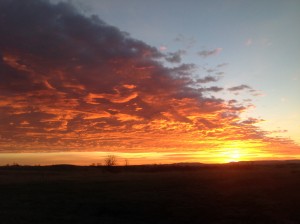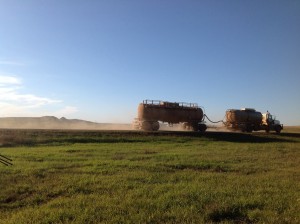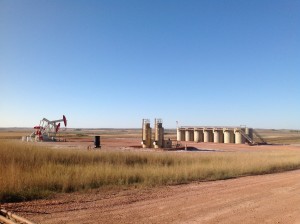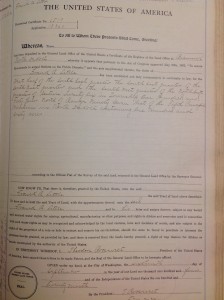Finding Fayette is a project that will produce an exhibit and a series of public programs about the past and present history around Fayette, North Dakota. A hundred years ago, homestead farms dotted the landscape near this small town in Dunn County. The project will take a journey into the past to offer a deeper understanding and appreciation of the lives of early 20th century neighboring homesteaders while offering a visual look at “then and now.”
To my knowledge, there is nothing left of the town today. However, I’ve seen a few snapshots of Fayette housed in the archives at the Dunn Center Museum. Perhaps as a testament to pioneer tenacity, Fayette has remained on many current road maps. One example is on page 32 of the 2009 Delorme Atlas & Gazetteer of North Dakota. It might be fair to say that Fayette has not entirely disappeared.
Fayette has a special significance to me, the project’s director. It is the town listed as the birthplace of my father. No doubt it was listed as the birthplace of many children who, like him, were born on their family’s homestead. A hand-drawn map by my uncle indicates that Fayette was five miles east of my grandparents’ homestead along the Knife River. Fayette maintained a post office and a small general store, likely a vital communication center for rural North Dakotans a century ago.
In October 2014, we begin an outreach project to identify people who once lived near Fayette. We need your help. Do you know descendents of families who lived near Fayette? Do you have historic family snapshots or stories that you could share with us? We’d like to talk with you. Please contact us at info@northdakotasnapshots.org
HOW THE PROJECT BEGAN
Research trips to North Dakota to locate my family’s homestead produced some interesting information and delightful documentary photography. Finding the exact location of Fayette, however, eluded me. I became more and more curious about that town and the homestead families who had lived nearby. I knew what had become of my family and their farm, but what had happened to other families? If I could see snapshots and hear the stories about other families like mine, I knew my understanding of this homesteading era would be much richer. Since I worked for many years as the director of an historical museum, I had a good notion that, by expanding my own family history research, a broader and deeper story could – and should – be told.
A professional photographer friend from Seattle, John Lewis, joined me a couple of years ago on my last research trip to North Dakota. He photograhed my grandparents’ old homestead and local landmarks. John grew up in North Dakota and has made many trips back over the years for his own photographic projects. We are both third generation Norwegian-Americans. Our immigrant grandparents homesteaded in Western North Dakota. We also share an appreciation of black and white photography, North Dakota history, and good storytelling. Without a doubt, we agree that the 1978 film Northern Lights is the best film we’ve ever seen about North Dakota.
John’s passion for visually documenting North Dakota’s changing landscape and the people who live there offered an intriguing new possibility for my research project. I thought, what about collaborating to create an exhibit of “past and present” that would include family stories, historic snapshots, and the art of contemporary photography?
Finding Fayette had begun!




